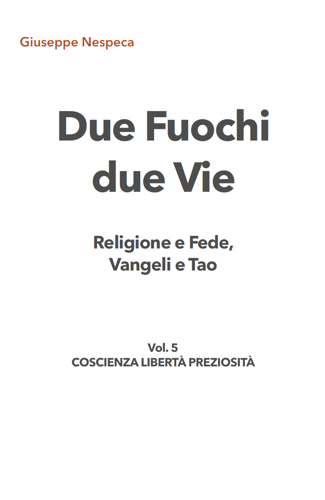1. When speaking of the dignity and mission of woman according to the doctrine and spirit of the Church, it is necessary to have one's eyes on the Gospel, in the light of which the Christian sees, examines, and judges everything.
In the previous catechesis we projected the light of Revelation on the identity and destiny of woman, presenting the Virgin Mary as a signpost, according to the indications of the Gospel. But in that same divine source we find other signs of Christ's will concerning woman. He speaks of her with respect and kindness, showing in his attitude his willingness to welcome the woman and demand her commitment to the establishment of the Kingdom of God in the world.
2. We can recall first of all the numerous cases of healing of women (cf. John Paul II, Mulieris dignitatem, 13). And those others in which Jesus reveals his heart as Saviour, full of tenderness in his encounters with those who suffer, whether men or women. "Do not weep!" he says to the widow of Nain (Lk 7:13). And then he gives her back her son raised from the dead. This episode gives a glimpse of what Jesus' intimate feeling must have been towards his mother, Mary, in the dramatic perspective of her participation in his own Passion and Death. Even to the dead daughter of Jairus Jesus speaks tenderly: "Little girl, I say to you, get up!". And, having resurrected her, he orders "to give her something to eat" (Mk 5:41, 43). Again, he manifests his sympathy for the bent woman, whom he heals: and in this case, with the allusion to Satan, he also alludes to the spiritual salvation he brings to that woman (cf. Lk 13:10-17).
3. In other pages of the Gospel we find Jesus' admiration for the faith of certain women expressed. For example, in the case of the woman suffering from haemorrhaging: "Your faith has saved you" (Mk 5:34), he says to her. It is a praise that is all the more valuable because the woman had been the object of segregation imposed by the ancient law. Jesus also frees the woman from this social oppression. In turn, the Canaanite woman receives recognition from Jesus: "Woman, truly great is your faith" (Mt 15:28). It is a praise that has a very special meaning, when one considers that it was addressed to a stranger to the world of Israel. We can still recall Jesus' admiration for the widow who offers her offering in the temple treasury (cf. Lk 21:1-4); and his appreciation for the service he receives from Mary of Bethany (cf. Mt 26:6-13; Mk 14:3-9; Jn 12:1-8), whose gesture - he announces - will be made known to the whole world.
4. Even in his parables Jesus does not hesitate to bring similes and examples from the female world, unlike the midrash of the rabbis, where only male figures appear. Jesus refers to both women and men. Wanting to make a comparison, one could perhaps say that the advantage is on the side of women. This means, at the very least, that Jesus avoids even the appearance of an attribution of inferiority to women.
And again: Jesus opens the access of his kingdom to women as well as to men. By opening it to women, he wants to open it to children. When he says: "Let the children come to me" (Mk 10:14), he is reacting to the disciples' surveillance that wanted to prevent women from presenting their children to the Master. One might say that he gives reason to the women and their love for children!
In his ministry, Jesus is accompanied by many women, who follow him and serve him and the community of disciples (cf. Lk 8:1-3). This is a new fact, compared to the Jewish tradition. Jesus, who drew these women to follow him, also in this way manifests the overcoming of the prejudices widespread in his environment, as in much of the ancient world, on the inferiority of women. His fight against injustice and arrogance also includes this exclusion of discrimination between women and men in his Church (cf. John Paul II, Mulieris dignitatem, 13).
5. We cannot fail to add that the Gospel shows Jesus' benevolence even towards certain female sinners, whom he asks to repent, but without raging against them for their errors, all the more so since these involve a co-responsibility of man. Some episodes are very significant: the woman who goes to the house of the Pharisee Simon (cf. Lk 7:36-50) is not only forgiven for her sins, but also praised for her love; the Samaritan woman is transformed into a messenger of the new faith (cf. Jn 4:7-37); the adulterous woman receives, with forgiveness, a simple exhortation not to sin again (cf. Jn 8:3-11); (John Paul II, Mulieris dignitatem, 14). Undoubtedly, there is no acquiescence in Jesus in the face of evil, of sin, whoever it is committed by: but how much understanding of human frailty and what kindness towards those who already suffer from their own spiritual misery, and more or less consciously seek their Saviour in him!
6. Finally, the Gospel testifies that Jesus expressly calls women to cooperate in his saving work. He not only admits them to follow him to serve him and the community of disciples, but he asks them for other forms of personal commitment. Thus, he asks Martha for a commitment to faith (cf. Jn 11:26-27): and she, responding to the Master's invitation, makes her profession of faith before the resurrection of Lazarus. After the Resurrection, she entrusts the pious women who had gone to the tomb and Mary of Magdala with the task of passing on her message to the Apostles (cf. Mt 28:8-10; Jn 20:17-18): "The women were thus the first messengers of the Resurrection of Christ to the Apostles themselves" (Cathechismus Catholicae Ecclesiae, 641). These are quite eloquent signs of his willingness to also engage women in service to the Kingdom.
7. This behaviour of Jesus has its theological explanation in his intention to unify humanity. He, as St Paul says, wanted to reconcile all men, through his sacrifice, "into one body" and make all "one new man" (Eph 2:15, 16), so that now "there is neither Jew nor Greek; there is neither slave nor free; there is neither male nor female, for you are all one in Christ Jesus" (Gal 3:28). And here is the conclusion of our catechesis: if Jesus Christ has reunited man and woman in the equality of the condition of children of God, He commits both to His mission, not suppressing diversity at all, but eliminating all unjust inequality, and all reconciling in the unity of the Church.
8. The history of the first Christian communities testifies to the great contribution that women brought to evangelisation: beginning with "Phoebe, our sister, - as St Paul describes her - deaconess of the Church of Cenchre: . . . she too,' he says, 'has protected many, and myself also' (Rom 16:1-2). It is dear to me to pay homage here to the memory of her and the many other co-workers of the Apostles in Cencre, in Rome and in all Christian communities. With them we also remember and extol all the other women - religious and lay - who over the centuries have borne witness to the Gospel and transmitted the faith, exerting a great influence on the flourishing of a Christian atmosphere in the family and society.
[Pope John Paul II, General Audience 6 July 1994]












